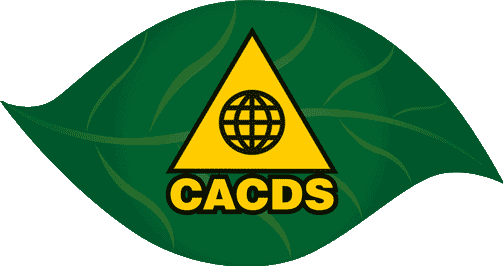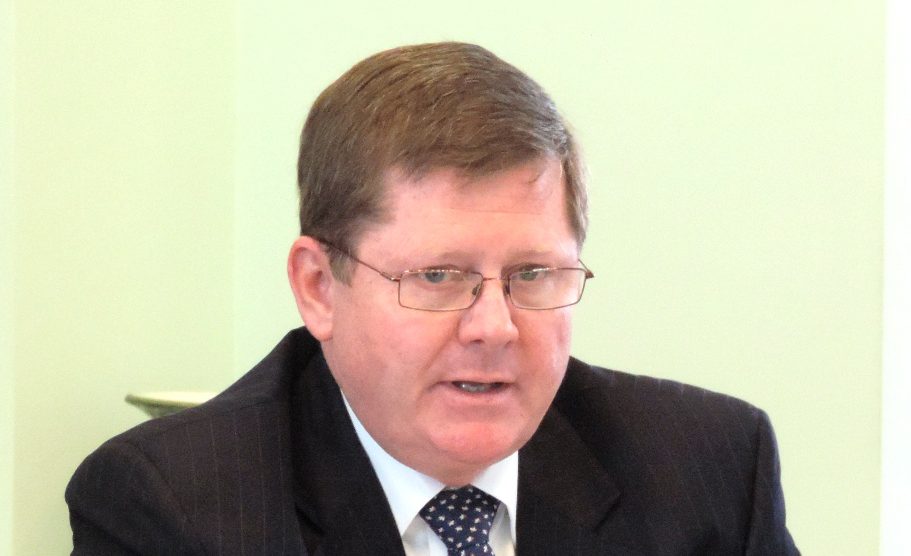I would like to address three points: (1) the framework for defence-technical cooperation that exists today between NATO and Ukraine; (2) an overview of latest activities; and (3) opportunities for further development of cooperation in this field.
NATO-Ukraine framework for defence-technical cooperation
Let me start by drawing a picture of the overarching framework for cooperation between NATO and Ukraine. This framework is underpinned by the 1997 Charter on a Distinctive Partnership. The NATO-Ukraine Commission (NUC) provides direction and serves as a forum for consultation between Allies and Ukraine on issues of concern.
A number of joint working groups have been set up under the umbrella of the NUC to take forward the work in specific areas, including the Joint Working Group on Defence Reform that facilitates consultation and practical cooperation in defence and security sector reform. In 2004, a coordination mechanism was created in the area of defence-technical cooperation – the Joint Working Group on Defence-Technical Cooperation (JWG DTC).
This Group focuses on enhancing interoperability of Ukrainian contributions to international operations with the forces of NATO Nations. We have had twenty meetings so far, with the last one held this past January in Kyiv. With the January meeting we raised the level of co-chairmanship to indicate the strengthening of cooperation between NATO and Ukraine in these difficult times. This working group is a mechanism to provide oversight of and direction to cooperation. This cooperation takes places through multiple contacts in NATO including the Conference of National Armaments Directors – the CNAD, the Air Traffic Management Committee or the Consultation, Command and Control Board (C3B). Thanks to avid interest from Ukraine we have seen increased participation in all of these groups which we believe will ensure continued interoperability with NATO.
Let me now give you an overview of some of the latest activities.
Overview of latest activities
During the January meeting of the Joint Working Group on Defence-Technical Cooperation, Ukrainian and NATO representatives assessed Ukraine’s involvement in the activities of the CNAD, reviewed cooperation in various capability development strands and identified several practical areas of cooperation in view of enhancing interoperability and strengthening the capabilities of the Ukrainian Armed Forces.
To begin with, the participation of Ukrainian experts in the CNAD – Conference of National Armaments Directors, is intended to promote cooperation in the armaments field. It brings together the top national officials responsible for defence procurement in NATO member and partner countries to consider the political, economic and technical aspects of the development and procurement of equipment for NATO forces.
CNAD has a substantial substructure. That is, various groups, sub-groups and specialist teams under the Army, Naval and Air Force Armaments Groups as well as groups active in the fields of ammunition safety, system life cycle management, logistics codification and the defence industry. These groups support cooperation on equipment and research projects and serve as means of information sharing on national programmes to the benefit of both individual countries and NATO as a whole.
A significant portion of the CNAD substructure is open to partners, especially the Partnership for Peace (PfP) countries, including Ukraine. I am pleased to say that Ukraine is one of the most active partners. Cooperation is taking place for example in CBRN defence, Ground Based Air Defence and Logistics Codification domains. I am pleased that my division has been able to support increased participation by Ukraine through financial assistance to enable participation of Ukrainian experts in the various fora.
Such participation enhances Ukraine’s access to information on armaments cooperation with Allies thus improving interoperability between NATO and Ukrainian forces through networking, material standardization and participation in multinational projects.
Let me make a special point on defence industry, as this is one of the main topics of today’s conference. The NATO Industrial Advisory Group (NIAG) under the CNAD is a forum where high level representatives from the defence and security industry of the 28 NATO Nations and partner nations come together to discuss research, development and production of armaments and provide advice on armaments cooperation and the streamlining of capability development. Recently we had representatives from Ukroboronprom attend the meetings, to deliver a report on Ukrainian defence industry capabilities; this was well received and much appreciated.
I would also like to mention that the NATO-Industry Forum to be held in Lisbon, Portugal the 19th and 20th October is the venue for NATO Leaders and Strategic Commanders to interact with senior representatives from industry and discuss future plans and strategies. Industry is invited to share their thoughts for the future, and explain how they see the geopolitical environment shaping and influencing their investment decisions. Ukrainian representatives are welcome to participate, as the Forum is open to PfP countries.
Beyond the CNAD, NATO is assisting Ukraine in capability development also through multinational projects and the newly established Trust Funds. As for multinational projects, you have probably all heard of NATO’s Smart Defence initiative, which is about harmonizing requirements, similarly to the way the EU pursues pooling and sharing of capabilities, to prioritize and coordinate more cost-efficient, effective and coherent capability delivery. There are currently 91 active Smart Defence projects, with 30 mature ones called Tier 1 and 61 less advanced projects referred to as Tier 2. Of them, 23 Tier 1 (or 77%) and 34 Tier 2 (56%) projects are open to partners with the agreement of participating Nations. Ukraine currently participates in projects on Harbour Protection and Female Leaders in Security and Defence. And we are ready to work with Allies to facilitate participation in more projects should there be interest.
The Trust Funds are an important element of capability development and capacity building in the areas of command, control, communications and computers (C4); logistics and standardization; cyber defence; military career transition management; and medical rehabilitation.
The objective of the C4 Trust Fund, managed by my division, is to identify, fund and implement projects to assist Ukraine in modernizing C4 structures and systems, to enhance interoperability with NATO in NATO-led exercises and operations, and to enhance the ability of Ukraine to provide for its own security and defence. Lead Nations are United Kingdom, Germany, and Canada with confirmed contributions from five other Allies and three countries that have indicated an interest to contribute.
The Logistics and Standardization Trust Fund also falls under the scope of defence-technical cooperation. Led by the Czech Republic, the Netherlands and Poland, the goal of this trust fund is to help build a logistics and standardisation system for the Ukrainian defence sector. This will be achieved by the implementation of specific logistics projects, including Information Technologies, structures and processes.
Finally, there is cooperation in the field of air security. The key component of this cooperation is the Air Situation Data Exchange (ASDE) programme. The programme, which Ukraine joined in 2006, serves to improve situational awareness of activity in the national and nearby airspace to reduce the risk of misunderstanding through the exchange of air situation between NATO and Partner Nations. As a result of the ongoing crisis, air data information provided by NATO to Ukraine has been extended to cover a larger area.
Opportunities for further development of cooperation
As you can see from this short summary, a lot has been happening in the field of defence-technical cooperation. Current priorities include standardization and codification as means for increasing interoperability; implementation of the C4, Logistics and Standardization Trust Funds; cooperation in the framework of the CNAD, including industry; Ukraine’s participation in Smart Defence; and air security.
Practical steps being taken include, for example, planned participation by Ukrainian representatives in the upcoming NATO Standardization courses, supported by NATO funding. Under Codification cooperation, NATO will fund the acquisition of an automated codification system for Ukraine and provide associated training under the Logistics and Standardization Trust Fund. We expect several more projects to be initiated in 2015 under both the Logistics and Standardization Trust Fund and the C4 Trust Fund. For both Trust Funds, several fact finding missions by NATO staff have already taken place, with significant support from the Ukrainian side. These Fact Finding missions help formulate specific projects that will be implemented, in coordination with Ukraine.
We hope Ukraine will continue to send experts to the various CNAD activities, with NATO providing financial support. We are also very pleased that Ukraine will host a meeting of the Land Capability Group on Land Engagement under the NATO Army Armaments Group in Kyiv this September. Conducting NATO meetings in Ukraine sends a strong signal of NATO’s support for your country.
NATO staff is also prepared to help Ukraine approach relevant Allies in the context of Smart Defence projects of interest to Ukraine.
Cooperation in air security under the ASDE programme will also continue.
Conclusion
So to sum it all up, there are many positive activities going on. NATO is pleased to continue our collaboration to strengthen Ukrainian capabilities and capacities.
I look forward to listening to the other panellists and fielding your questions in the discussion. Thank you.
Ernest J. Herold,
Deputy Assistant Secretary General for Defence Investment, NATO HQ





